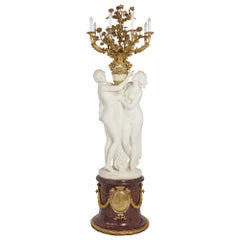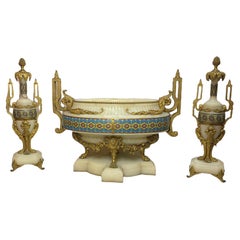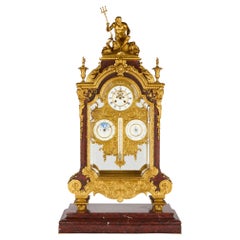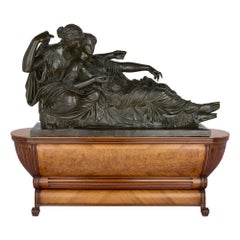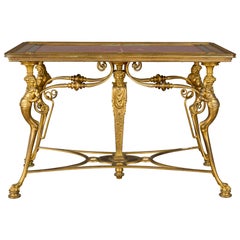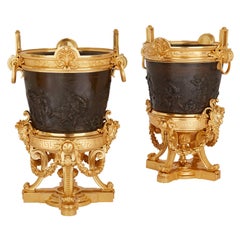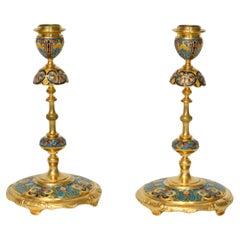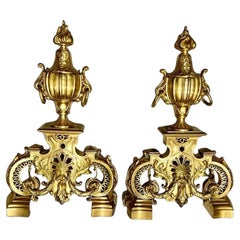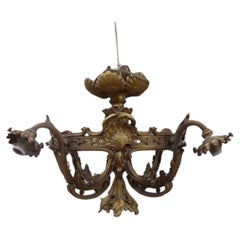Ferdinand Barbedienne On Sale
Antique Late 19th Century French Neoclassical Floor Lamps
Marble, Ormolu
Antique Late 19th Century French Empire Garniture
Onyx, Bronze
Antique Late 19th Century French Neoclassical Mantel Clocks
Griotte Marble, Enamel, Ormolu
Antique Late 19th Century French Figurative Sculptures
Bronze
Antique Late 19th Century French Neoclassical Center Tables
Marble, Ormolu
Antique Late 19th Century French Belle Époque Planters and Jardinieres
Bronze
Antique 1880s French Chinoiserie Candlesticks
Bronze, Enamel
Antique 19th Century French Napoleon III Fireplace Tools and Chimney Pots
Bronze
Antique 1890s French Louis XVI Chandeliers and Pendants
Bronze
Antique Late 19th Century French Neoclassical Mantel Clocks
Onyx, Bronze, Ormolu
Antique Late 19th Century French Louis XVI Garniture
Griotte Marble, Ormolu
Antique Late 19th Century French Louis XV Mantel Clocks
Enamel, Ormolu
Antique Late 19th Century French Louis XV Wall Lights and Sconces
Ormolu
Antique Late 19th Century French Louis XV Side Tables
Marble, Ormolu
Antique Mid-19th Century French Mantel Clocks
Marble, Bronze
Antique Late 19th Century French Neoclassical Mantel Clocks
Ormolu, Bronze
Antique Mid-19th Century French Vases
Bronze
Antique Late 19th Century French Neoclassical Figurative Sculptures
Bronze
Antique 19th Century French Renaissance Figurative Sculptures
Bronze
Antique Late 19th Century French Neoclassical Mantel Clocks
Griotte Marble, Ormolu, Bronze
Antique Late 19th Century French Neoclassical Figurative Sculptures
Spelter
Antique 19th Century French Napoleon III Mantel Clocks
Stone, Ormolu, Bronze
Antique Late 19th Century French Neoclassical Candelabras
Bronze
Antique 1860s French Louis XVI Candelabras
Marble, Bronze
Antique Late 19th Century French Neoclassical Table Lamps
Ormolu, Bronze
Antique Late 19th Century French Neoclassical Mantel Clocks
Ormolu, Bronze
Antique Late 19th Century French Vases
Bronze
Antique 19th Century French Napoleon III Mantel Clocks
Malachite, Marble, Ormolu, Bronze
Antique Late 19th Century French Neoclassical Gueridon
Marble, Ormolu, Bronze
Antique 1870s French Decorative Bowls
Bronze
Antique 19th Century French Neoclassical Vases
Marble, Bronze, Ormolu
Antique 19th Century French Neoclassical Figurative Sculptures
Bronze
Antique Late 19th Century French Neoclassical Revival Figurative Sculptures
Bronze
Antique Late 19th Century French Art Nouveau Urns
Bronze
Antique 1860s French Neoclassical Figurative Sculptures
Bronze
Antique 19th Century French Louis XVI More Clocks
Bronze
Antique 1890s French Empire Candlesticks
Bronze
Antique 19th Century Unknown Mounted Objects
Iron
20th Century Chinese Busts
Coral
Antique 1870s French Napoleon III Candlesticks
Enamel, Ormolu
Antique Late 19th Century French Other Vases
Bronze
Antique 1870s French Napoleon III Snuff Boxes and Tobacco Boxes
Silver, Bronze, Gold Leaf
Antique 19th Century French Neoclassical Decorative Bowls
Belgian Black Marble, Bronze
Antique 19th Century French Napoleon III Inkwells
Bronze, Enamel
Antique 1890s French Greek Revival Vases
Bronze
Antique Late 19th Century French Mantel Clocks
Bronze
Ferdinand Barbedienne On Sale For Sale on 1stDibs
How Much is a Ferdinand Barbedienne On Sale?
Ferdinand Barbedienne for sale on 1stDibs
Founded by one-time Parisian wallpaper dealer Ferdinand Barbedienne and engineer Achille Collas, one of the most revered foundries in 19th-century France began with the invention of a revolutionary 1830s-era device that could produce proportional reproductions — large or small — of sculptures. Collas’s machine, which yielded miniature likenesses of antiquities for the interiors of homes the world over, was pivotal to the success of the F. Barbedienne Foundry. The successful firm earned prestigious awards and critical acclaim and created exquisite bronze candleholders, clocks and lamps for a range of wealthy and prominent clients.
The duo first launched their company under the name Société Collas et Barbedienne, and early on, they optimized chemical processes for pigmenting and patinating their bronze statuettes. After Collas died in 1859, Barbedienne forged on alone, and the company’s name changed to simply F. Barbedienne.
Barbedienne employed more than 300 workers at that point, and the Maison created a range of furnishings and decorative objects that featured the integration of marble and ormolu accents. However, with the onset of the Franco-Prussian War of 1870, the foundry was forced to retrofit its molds, and the production of cannons replaced sculptures, furniture and vases.
When Ferdinand Barbedienne passed away in 1891, his nephew and heir, Gustave Leblanc, took over as president, changing the name to Leblanc-Barbedienne. Leblanc expanded production into Germany, the United Kingdom and the United States, carrying on the company's legacy with monumental sculptures, and models and securing production rights for famous statues. Paul-Alexandre Dumas, an Art Nouveau maker and student of Louis Majorelle, succeeded Leblanc until the company's closing in 1952.
Barbedienne pieces had been exhibited regularly in the 19th century and were especially prevalent at Europe’s international expositions and world’s fairs, where they received numerous prizes. Today, the Musée d’Orsay in Paris holds dozens of Barbedienne works in its collection, including intricate mirrors, vases and cups created by Louis-Constant Sévin at the foundry. For more than two decades, Sévin created lamps, boxes and more at Maison Barbedienne. Working alongside award-winning chaser Désiré Attarge, Sévin designed Napoleon III-era works that greatly appealed to European nobility.
Other notable artists who collaborated with Barbedienne included Eugene Aizelin, Emmanuel Fremiet, Antonin Mercié, Emile Guillemin, Edouard Lievre, Ferdinand Levillain and Auguste Rodin.
On 1stDibs, find a collection of antique Ferdinand Barbedienne decorative objects, lighting and more.
Finding the Right Decorative Objects for You
Every time you move into a house or an apartment — or endeavor to refresh the home you’ve lived in for years — life for that space begins anew. The right home accent, be it the simple placement of a decorative bowl on a shelf or a ceramic vase for fresh flowers, can transform an area from drab to spectacular. But with so many materials and items to choose from, it’s easy to get lost in the process. The key to styling with antique and vintage decorative objects is to work toward making a happy home that best reflects your personal style.
Ceramics are a versatile addition to any home. If you’ve amassed an assortment of functional pottery over the years, think of your mugs and salad bowls as decorative objects, ideal for displaying in a glass cabinet. Vintage ceramic serveware can pop along white open shelving in your dining area, while large stoneware pitchers paired with woven baskets or quilts in an open cupboard can introduce a rustic farmhouse-style element to your den.
Translucent decorative boxes or bowls made of an acrylic plastic called Lucite — a game changer in furniture that’s easy to clean and lasts long — are modern accents that are neutral enough to dress up a coffee table or desktop without cluttering it. If you’re showcasing pieces from the past, a vintage jewelry box for displaying your treasures can spark conversation: Where is the jewelry box from? Is there a story behind it?
Abstract sculptures or an antique vessel for your home library can draw attention to your book collection and add narrative charm to the most appropriate of corners. There’s more than one way to style your bookcases, and decorative objects add a provocative dynamic. “I love magnifying glasses,” says Alex Assouline, global vice president of luxury publisher Assouline, of adding one’s cherished objects to a home library. “They are both useful and decorative. Objects really elevate libraries and can also make them more personal.”
To help with personalizing your space and truly making it your own, find an extraordinary collection of decorative objects on 1stDibs.
